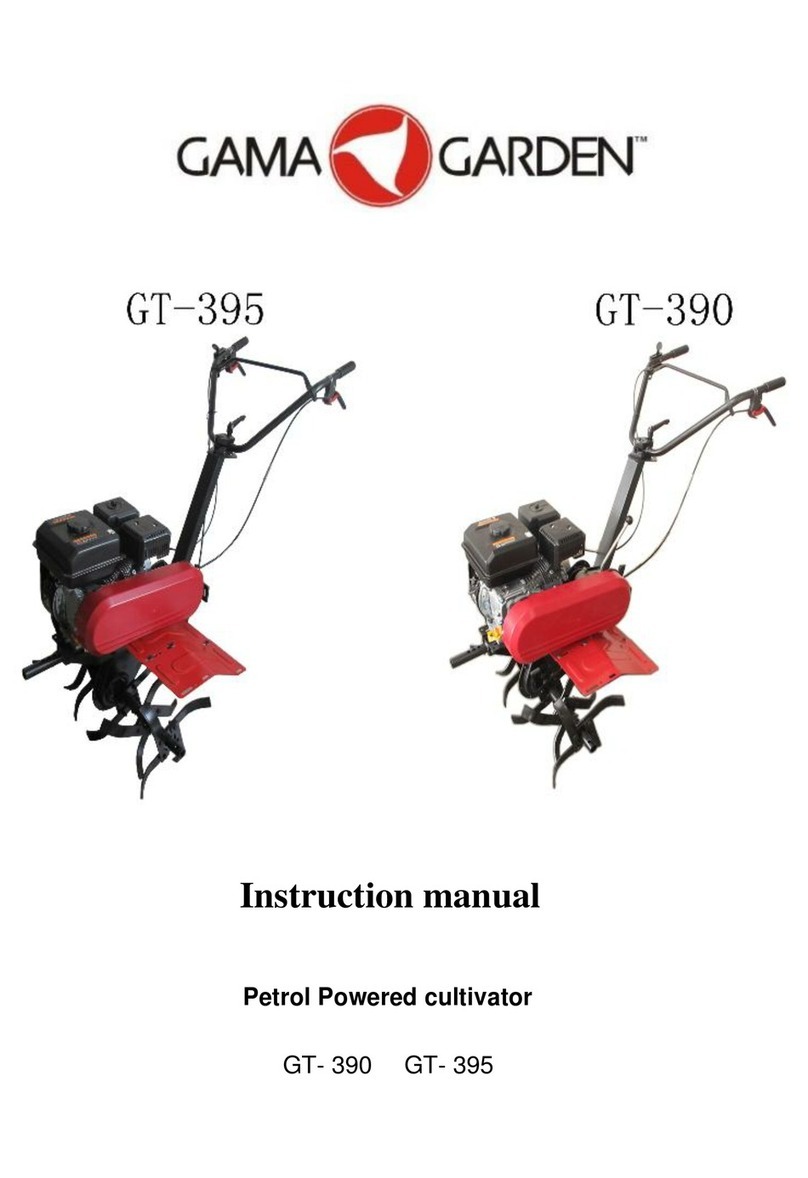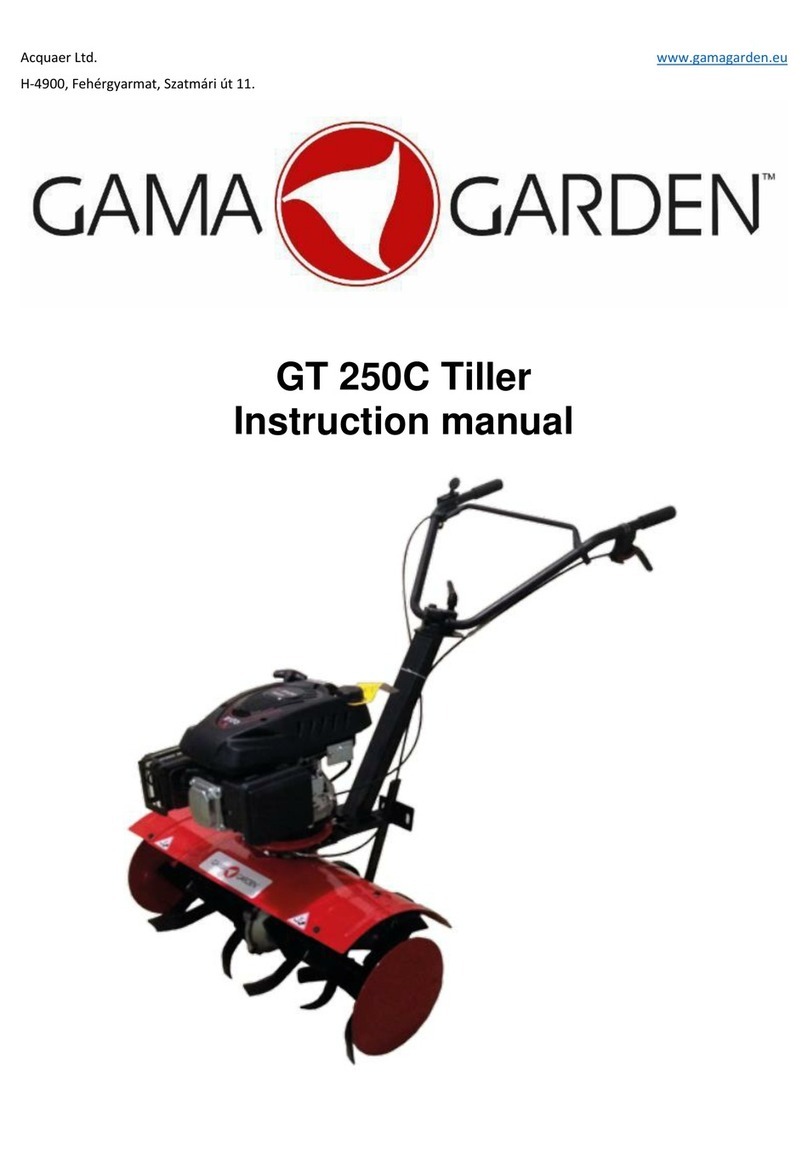Figure
13 Figure 14
2. Filling up the fuel tank with petrol
Filling-up of fuel tank with petrol is done prior to starting the
engine. Do not open the fuel tank cover if the engine is hot or
operating.
Screw on the fastening nut and check the clutch cable
again for proper tensioning.
Operation
Prior to the first use
Warning
CHECK THE TIGHTNESS OF ALL THREADED
CONNECTIONS ON THE CULTIVATOR, INCLUDING THE
FIXATION OF THE ENGINE.
1. Filling up the engine case with oil
Warning
THE CULTIVATOR ENGINE CASE IS DELIVERED
WITHOUT OIL!
Prior to the first start of the engine, fill up the case with oil of
proper amount that is 0.4 litres.
The oil level should reach the lower level in the oil filling
outlet when standing straight (see: Figure 14).
Choose the oil viscosity in accordance with the ambient
temperature, using the diagram below:
The following codes must be found on the oil can: API "SF” or
“SG”, “SH”, “SJ”, “SL”, “SM”.
Under normal operating conditions and in normal temperature
ranges, we recommend the following oil viscosity: SAE 10W-
30.
Note: The oil level check is done with cold engine not
operating. Place the cultivator on a straight, horizontal
surface, supported on the blades and the wheels.
1. Screw off the oil filler cover (see: Figure 14).
2. Check the oil level and fill it up if necessary.
3. Place back and screw in the oil filler cover.
Order of checking the oil level:
Warning
The oil level must reach the lower level in the in the oil filling
outlet.
Prior to filling up with petrol, place the cultivator in a place
where it is not subjected to the action of fire or spark.
Safety engineering rules during operations with
petrol
Danger
Petrol and its vapour may easily flame up and explode!
Prior to filling up, stop the engine and wait until it cools
down entirely.
Wipe through all parts of the cultivator on which petrol
dropped during the filling-up.
Start the engine far away from the place where the filling-
up was made and where the petrol flew out on the earth.
Prior to starting the engine, make sure that the fuel tank is
properly fastened and its cover is screwed tight.
Storethe petrol only in special, clean and closablecans.
Do not let petrol get on your skin and do not inhale its
vapours.
Danger! Petrol must be stored in a place
unreachable for children!
DO NOT SMOKE WHILE FILLING UP THE ENGINE
WITH FUEL.
For the prevention of fire, clean the cultivator components
including the engine surface, the exhaust silencer and
the fuel tank from grass. When filling up with petrol, use
a clean funnel.
The engine should be filled up with clean, fresh, non
ethylated, lead free petrol of octane number at least 95.
Fill up the petrol in such a way that its level does not
exceed 1 cm distance from the upper edge of the mesh
filter.
DO NOT USE CONTAMINATED PETROL OR PETROL
MIXED WITH OIL.
Note: In order to avoid unstable operation of the engine,
always fill up the petrol in due time.
Engine start-up
Danger! Carbon monoxide poisoning will occur if you
inhale the exhaust gases.
DO NOT start the engine in closed premises.
Prior to the engine start-up:
Check whether there is petrol in the fuel tank, and
check the oil level in the engine case.
Make sure whether the clutch lever is pressed on
(whether it is blocked in pressed-on condition).





























